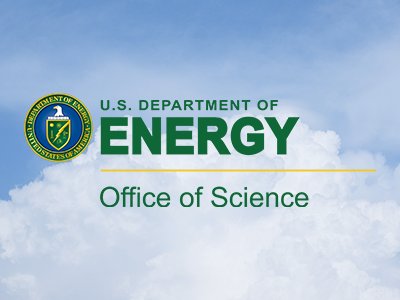Newly Funded ASR Projects Come with a Big TRACER Focus
Published: 18 August 2020
 In July 2020, the U.S. Department of Energy (DOE) announced funding of $19 million for 31 projects through DOE’s Atmospheric System Research (ASR).
In July 2020, the U.S. Department of Energy (DOE) announced funding of $19 million for 31 projects through DOE’s Atmospheric System Research (ASR).
These university-based projects are designed to expand the fundamental understanding of earth systems and improve earth system models. They include a range of atmospheric science topics, including interactions between clouds and aerosols, atmospheric processes in the high northern and southern latitudes, and the development of new atmospheric data products.
“Atmospheric processes leading to cloud formation and precipitation are notoriously complex and difficult to model accurately,” says Chris Fall, Director of DOE’s Office of Science. “These studies, which combine observation and modeling, will be important steps toward more precise and predictive models on both regional and global scales.”
Notably, 10 of the 31 projects will help maximize the scientific impact of the Atmospheric Radiation Measurement (ARM) user facility’s upcoming TRacking Aerosol Convection interactions ExpeRiment (TRACER).
The ARM TRACER-related projects include:
- Christopher Cappa, University of California, Davis – Characterization of carbonaceous aerosols during TRACER-CAT
- Gijs de Boer, University of Colorado – Measurements of TRACER pre-convective conditions and mesoscale circulations using small unmanned aircraft systems (sUAS)
- Petra Klein, University of Oklahoma – Coastal Urban Boundary-layer Interactions with Convection (CUBIC)
- Markus Petters, North Carolina State University – Size-resolved Eddy-Covariance Particle Flux Measurement during the TRACER Campaign
- Anita Rapp, Texas A&M University – Targeted Mobile Measurements to Isolate the Impacts of Aerosols and Meteorology on Deep Convection
- Rebecca Sheesley, Baylor University – TRACER-MAP: Mapping Aerosol Processes across Houston during convective cell events
- James Smith, University of California, Irvine – Ultrafine aerosol particle formation and impacts in Houston during TRACER
- Susan van den Heever, Colorado State University – Examining the Impacts of Microphysical-Dynamical Feedbacks on Convective Clouds in Different Aerosol Environments Using Enhanced Observational and Modeling Strategies
- Marcus van Lier-Walqui, Columbia University – Polarimetric radar & lightning analysis and high-resolution simulations to support TRACER science goals
- Jian Wang, Washington University in St. Louis – Aerosol hygroscopic growth, mixing state, and cloud condensation nuclei activity during TRacking Aerosol Convection interactions ExpeRiment (TRACER).
ASR received 87 full proposals submitted to DOE’s Funding Opportunity Announcement (FOA) DE-FOA-0002198, and the 31 projects selected for funding were chosen by competitive peer review.
“We want to thank all the researchers who did the long, thoughtful work to submit proposals; we are happy to be able to support so many excellent proposals this year,” says ASR Co-Program Manager Shaima Nasiri. “We also want to thank the 58 members of the scientific community who reviewed these proposals. Each contributed a significant amount of time and expertise throughout the peer-review process.”
Once fiscal year 2020 funding awards are finalized, principal investigators, project titles, abstracts, and team members will be added to the ASR projects web page.
Keep up with the Atmospheric Observer
Updates on ARM news, events, and opportunities delivered to your inbox
ARM User Profile
ARM welcomes users from all institutions and nations. A free ARM user account is needed to access ARM data.


















